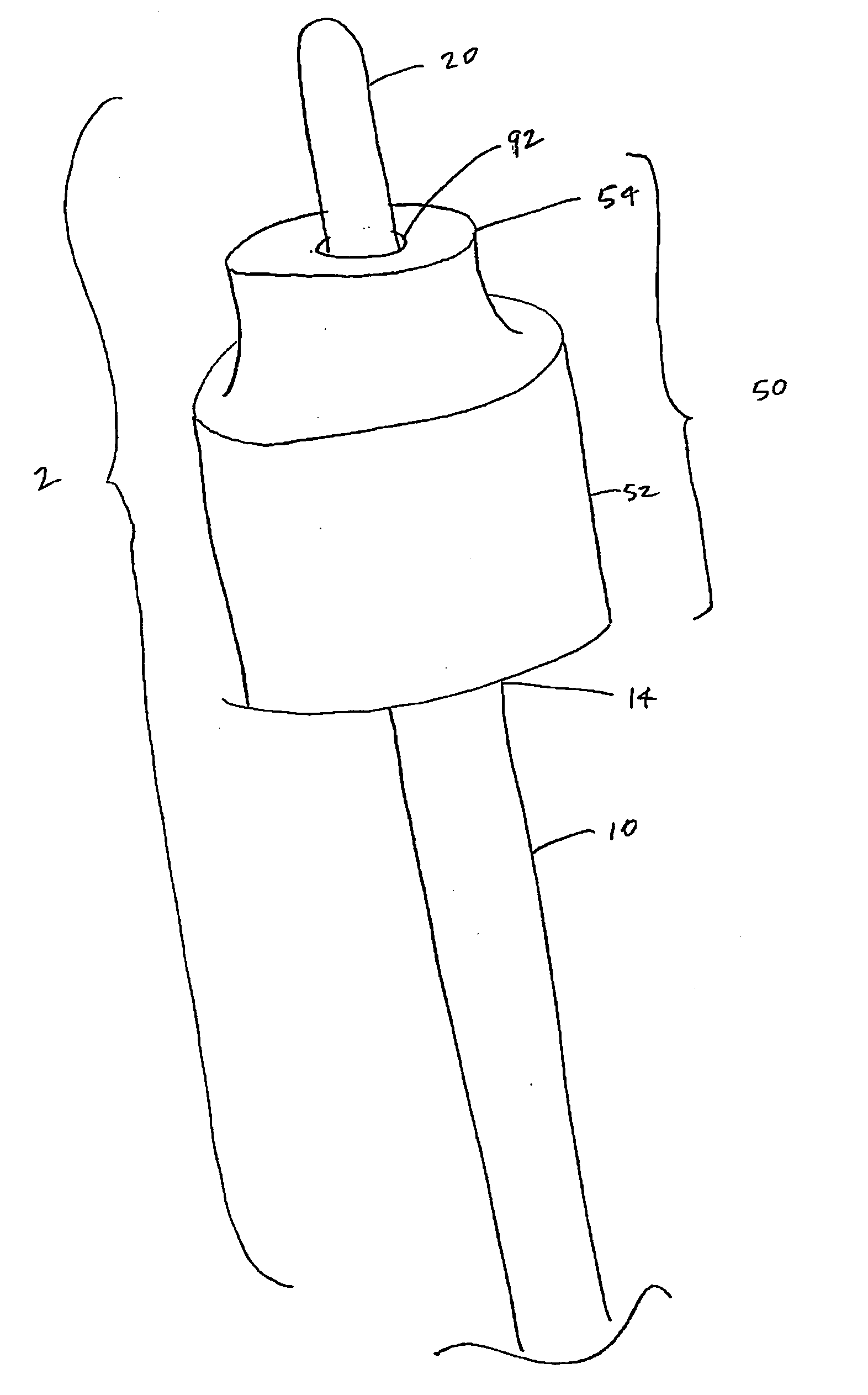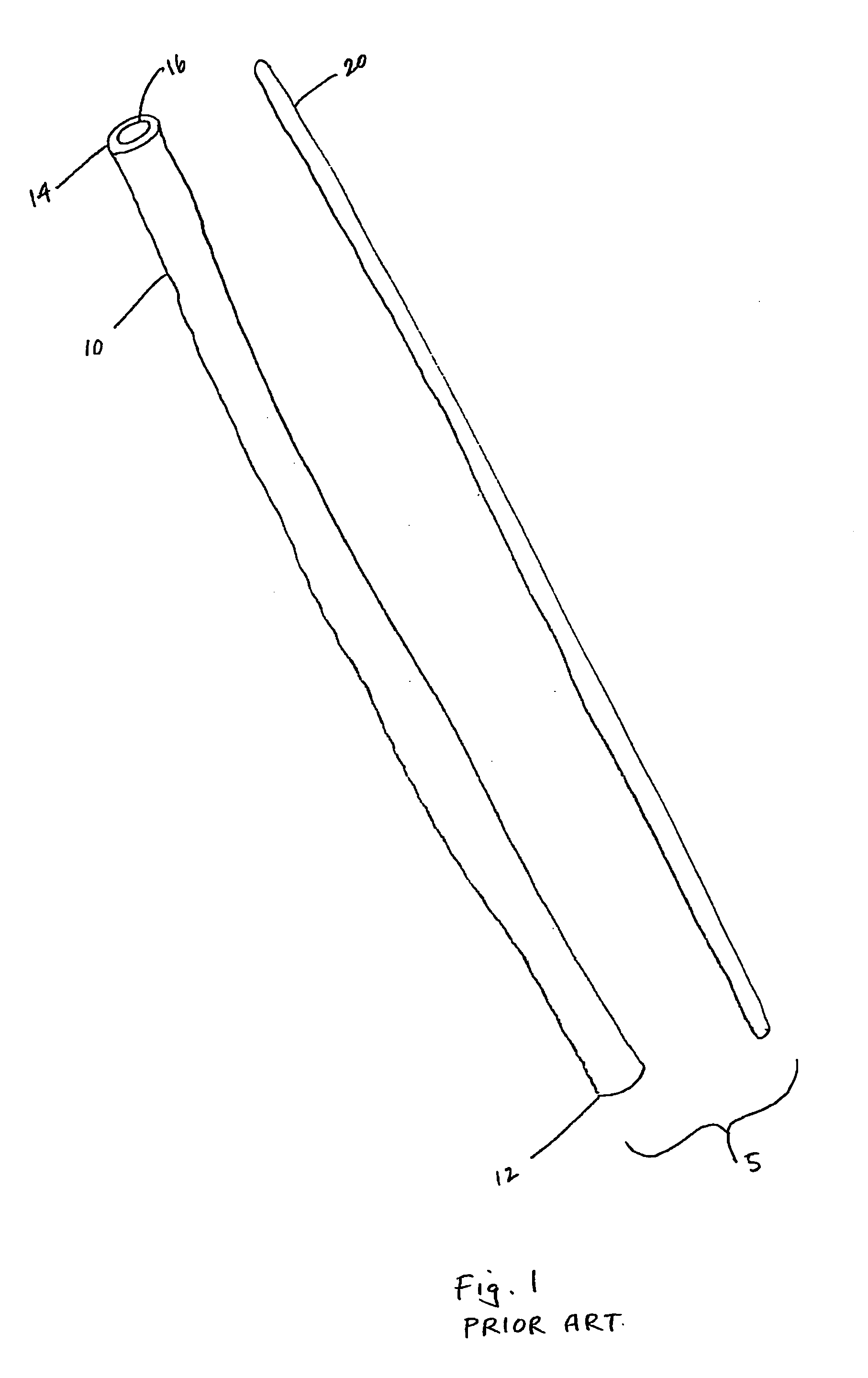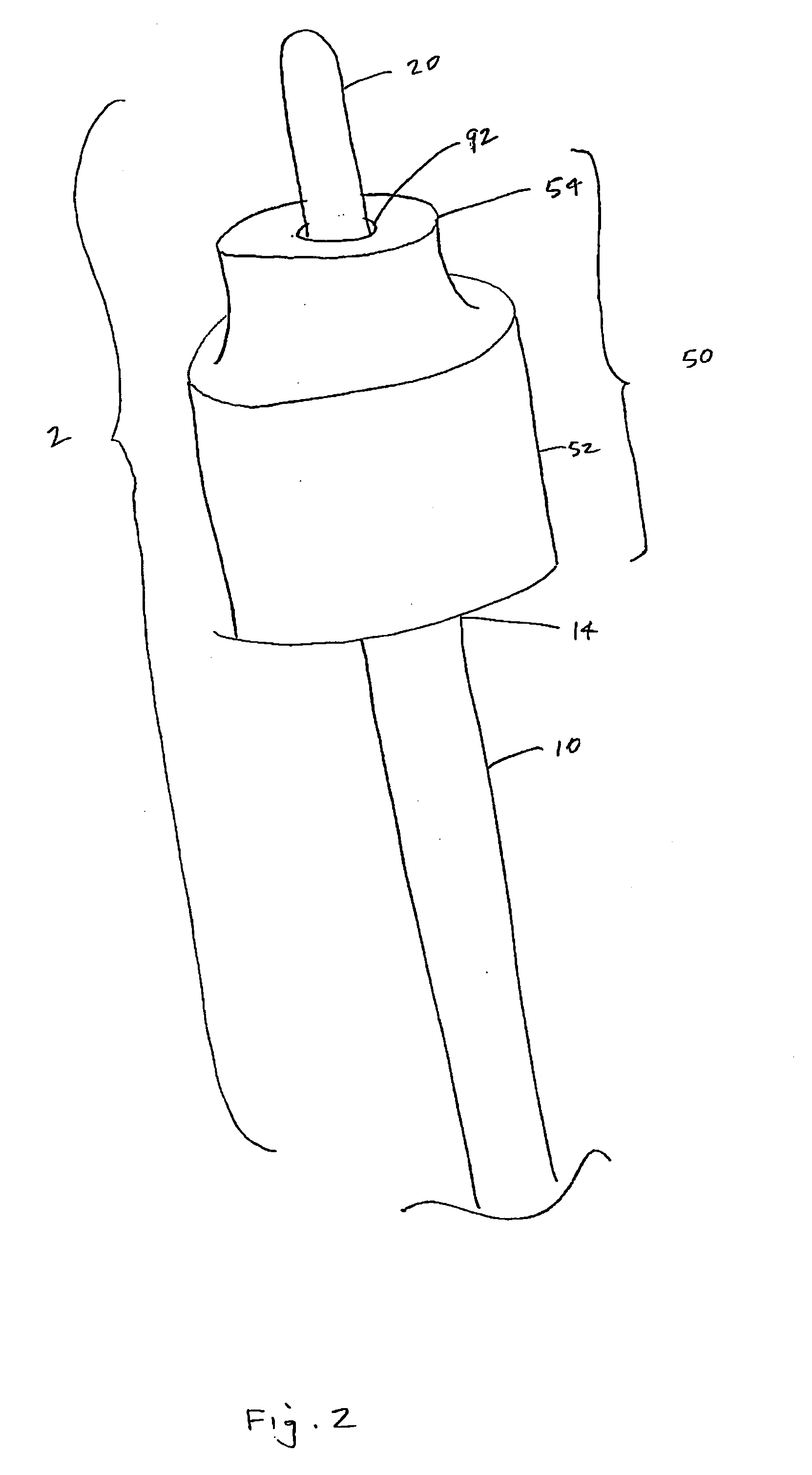Ventilating tube and stylet system
a ventilating tube and stylet technology, applied in the field of medical devices, can solve the problems of patient brain death, hypoxic brain damage or cardiopulmonary arrest, and patient brain damage, and achieve the effects of reducing the risk of strok
- Summary
- Abstract
- Description
- Claims
- Application Information
AI Technical Summary
Benefits of technology
Problems solved by technology
Method used
Image
Examples
Embodiment Construction
[0031]Aside from the preferred embodiment or embodiments disclosed below, this invention is capable of other embodiments and of being practiced or being carried out in various ways. Thus, it is to be understood that the invention is not limited in its application to the details of construction and the arrangement of components set forth in the following description or illustrated in the drawings. If only one embodiment is described herein, the claims hereof are not to be limited to that embodiment. Moreover, the claims are not to be read restrictively unless there is clear and convincing evidence manifesting a certain exclusion, restriction or disclaimer.
[0032]FIG. 1 shows a schematic of a prior art endotracheal tube system that is typically used by medical professionals to ventilate patients, the system includes an endotracheal tube 10 having lumen 16 that allows gas to flow through endotracheal tube 10. Endotracheal tube 10 has a distal end 12 that is inserted into the patient's a...
PUM
 Login to View More
Login to View More Abstract
Description
Claims
Application Information
 Login to View More
Login to View More - R&D
- Intellectual Property
- Life Sciences
- Materials
- Tech Scout
- Unparalleled Data Quality
- Higher Quality Content
- 60% Fewer Hallucinations
Browse by: Latest US Patents, China's latest patents, Technical Efficacy Thesaurus, Application Domain, Technology Topic, Popular Technical Reports.
© 2025 PatSnap. All rights reserved.Legal|Privacy policy|Modern Slavery Act Transparency Statement|Sitemap|About US| Contact US: help@patsnap.com



